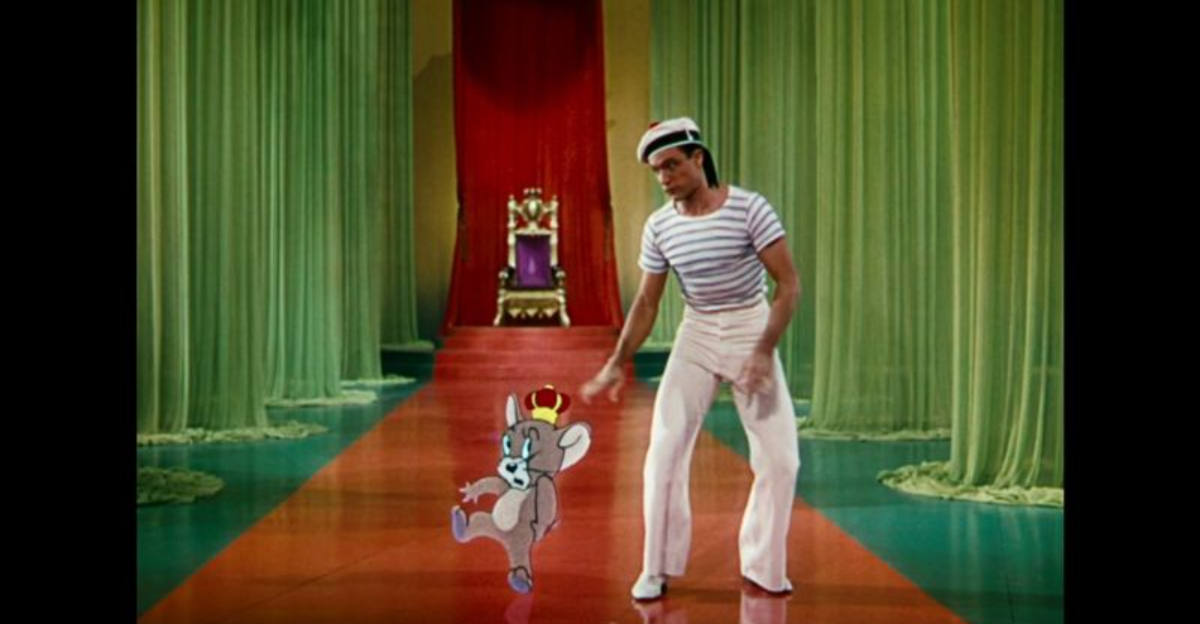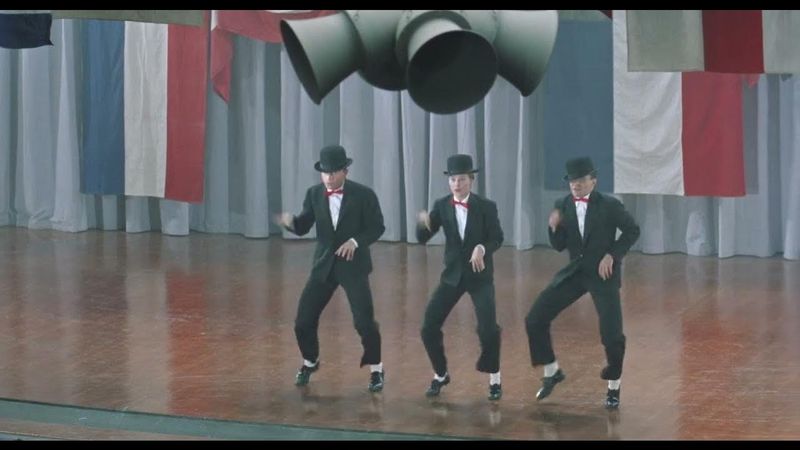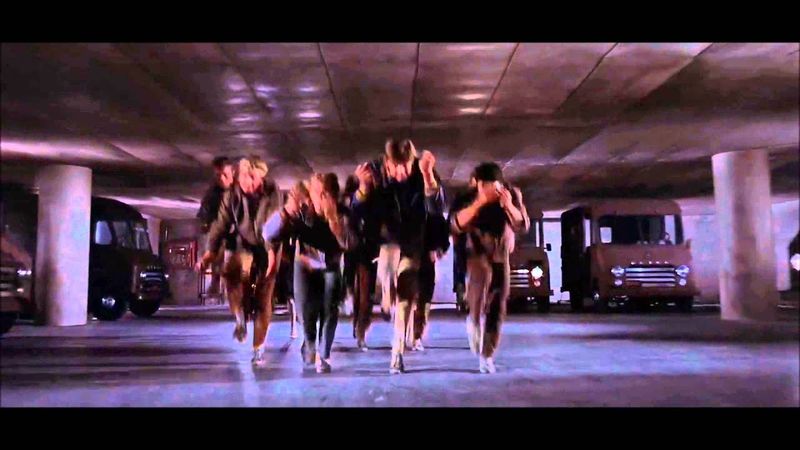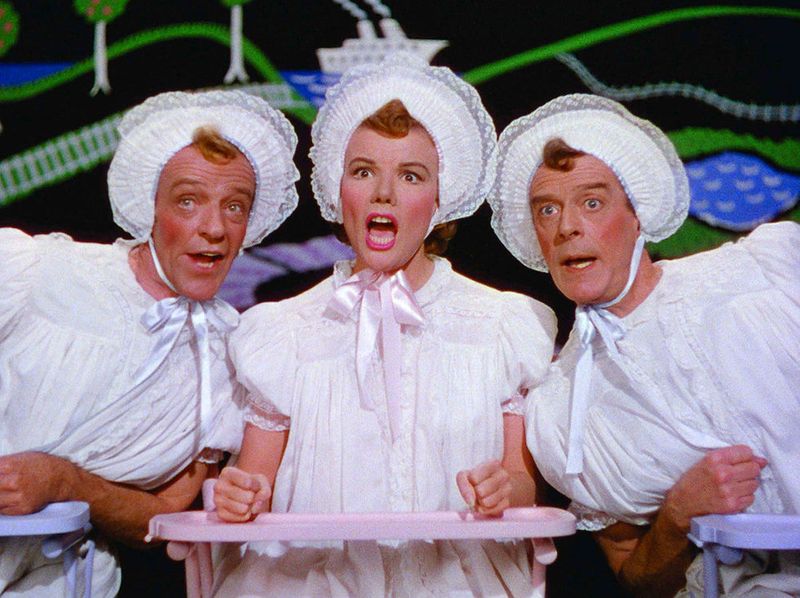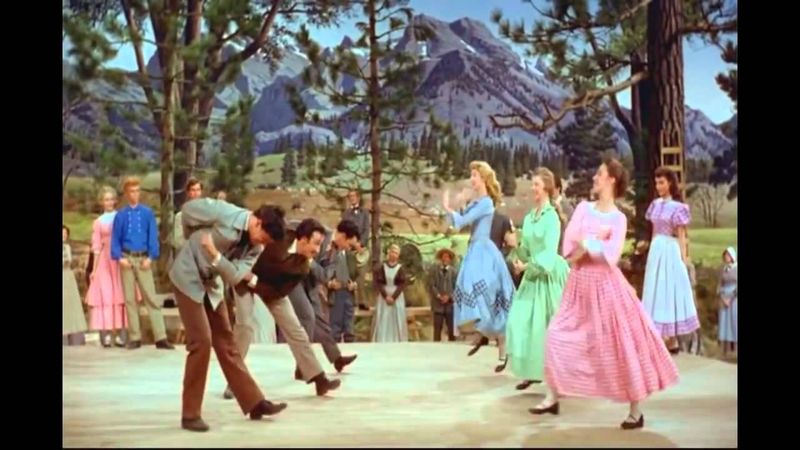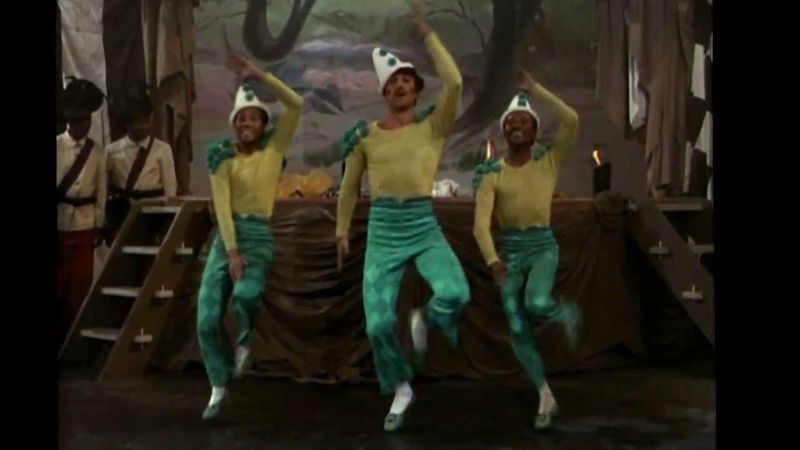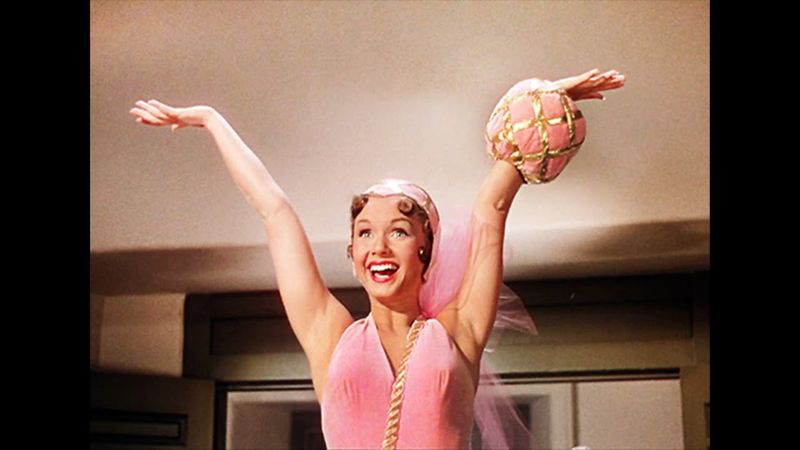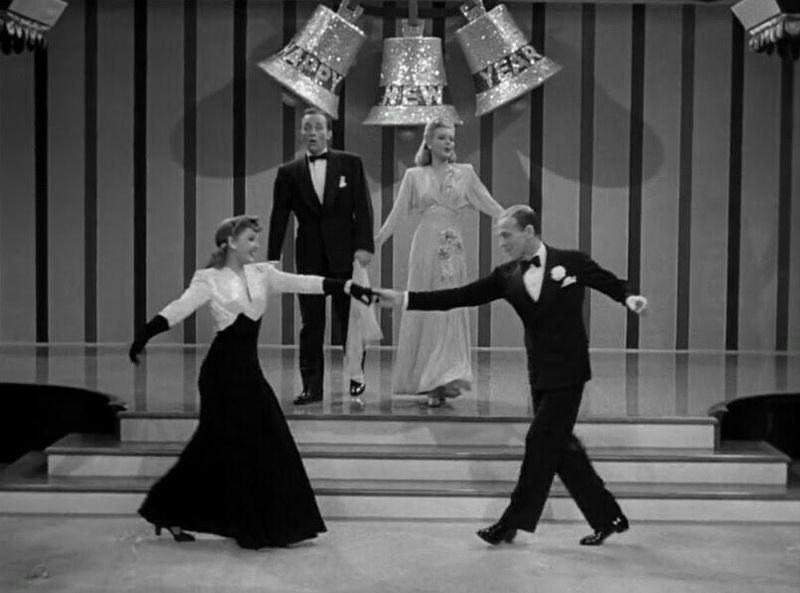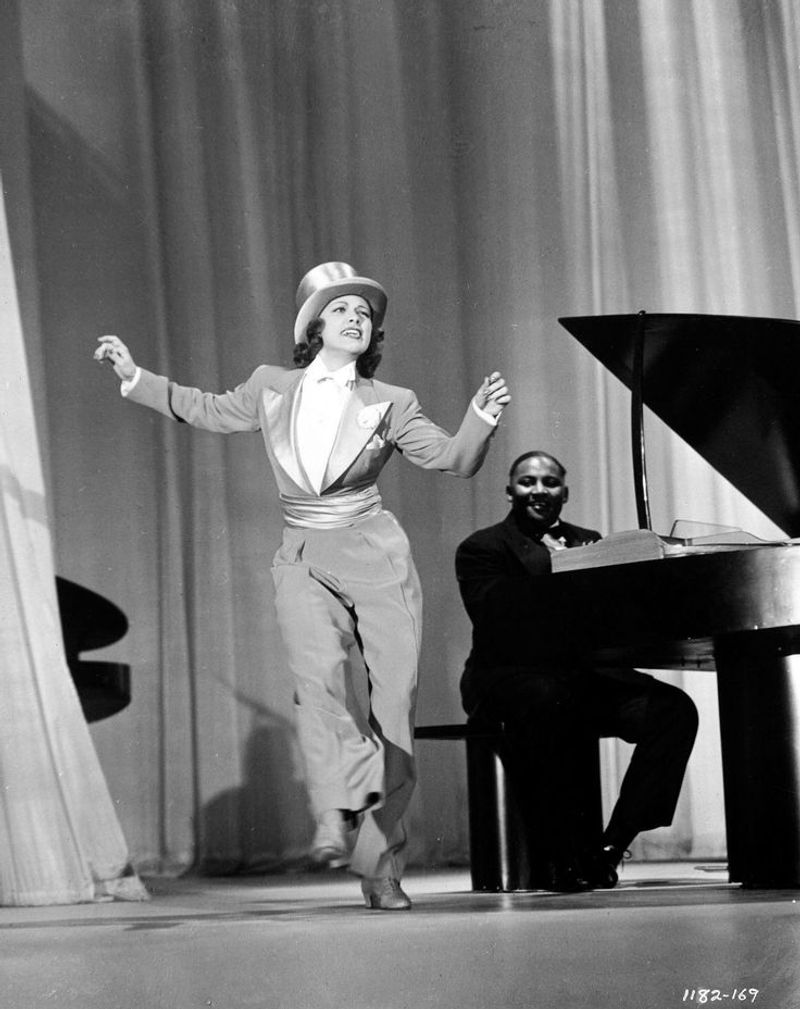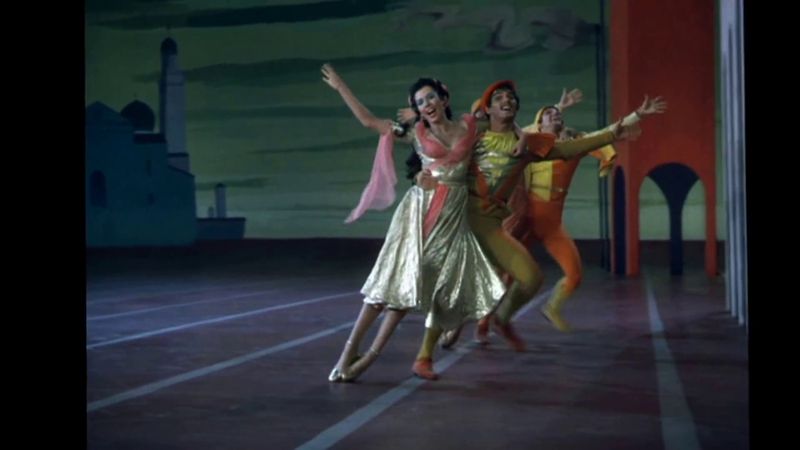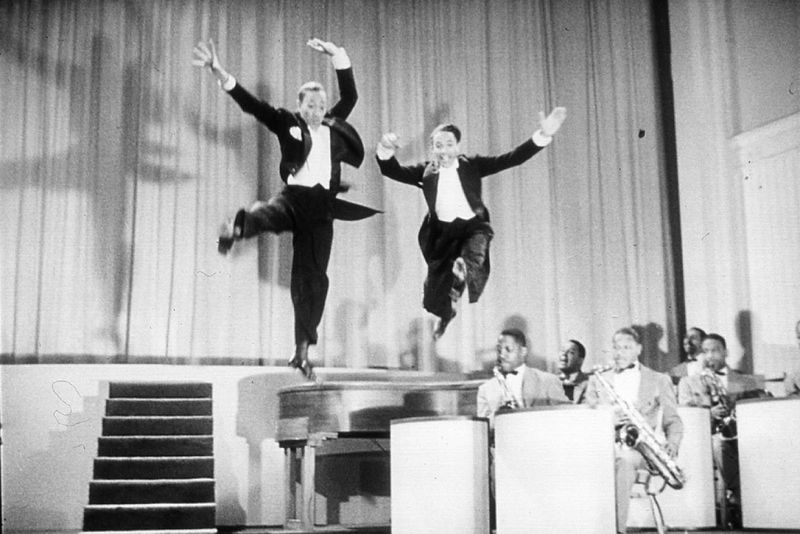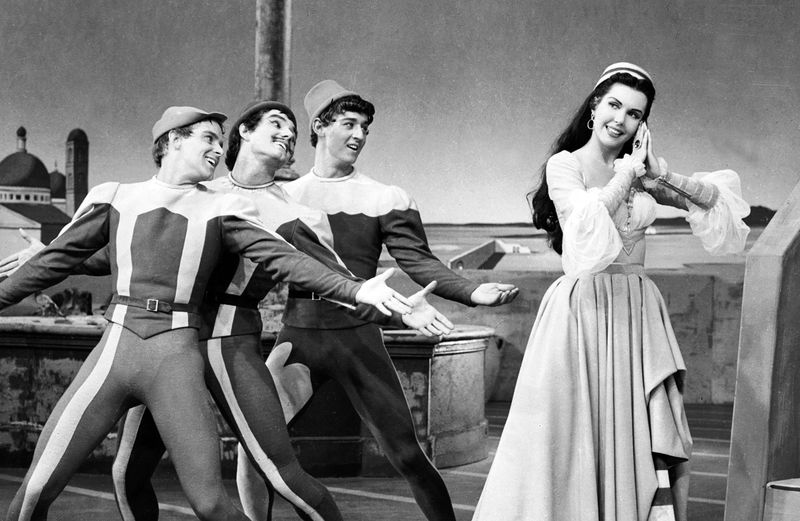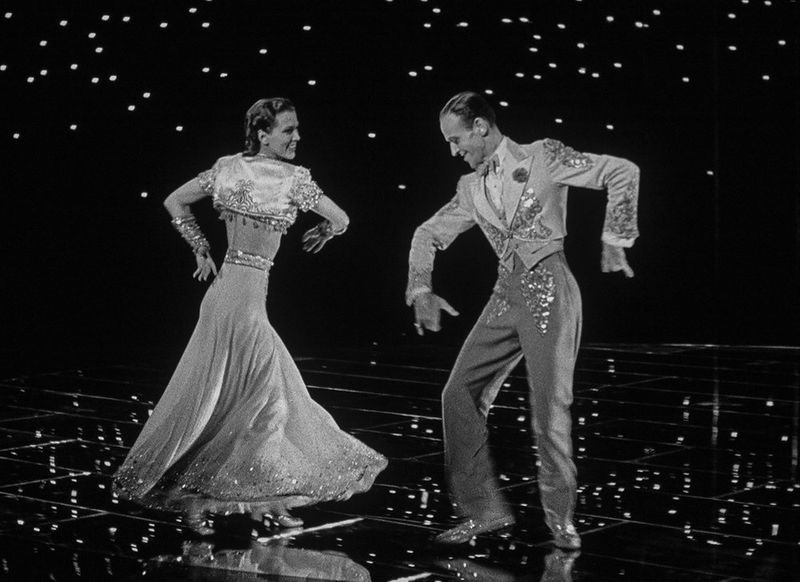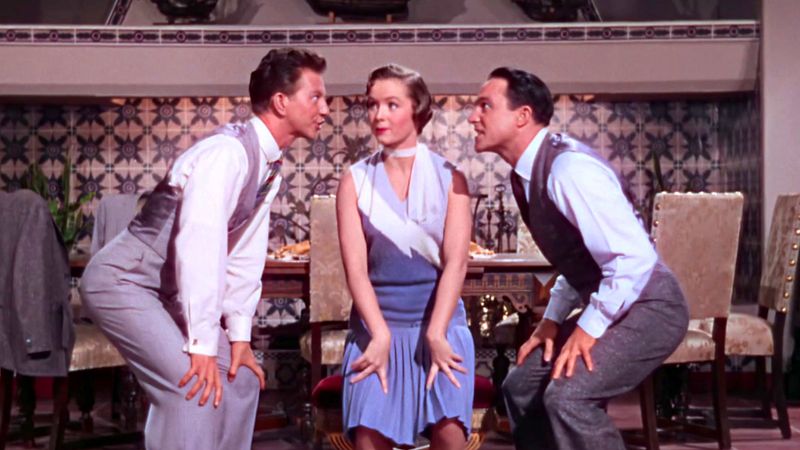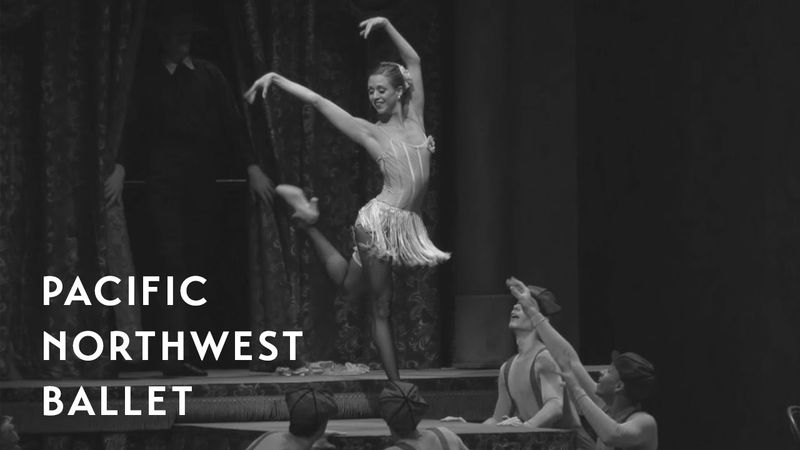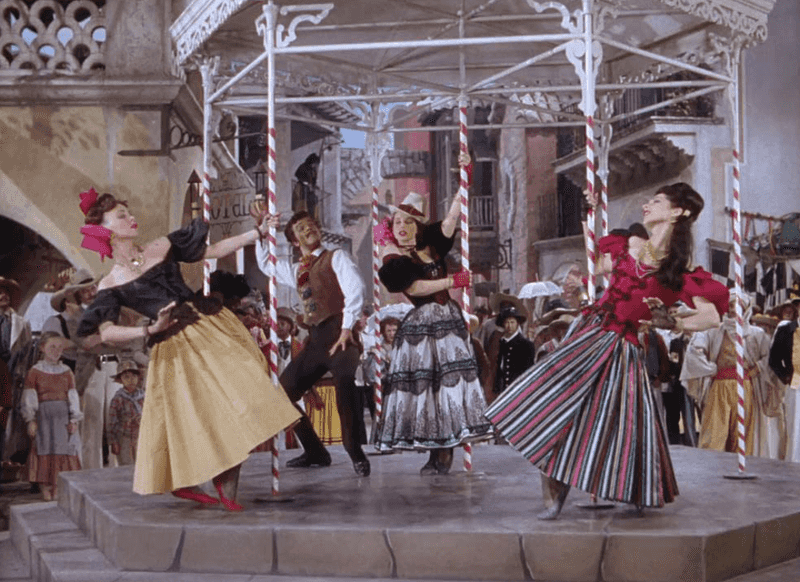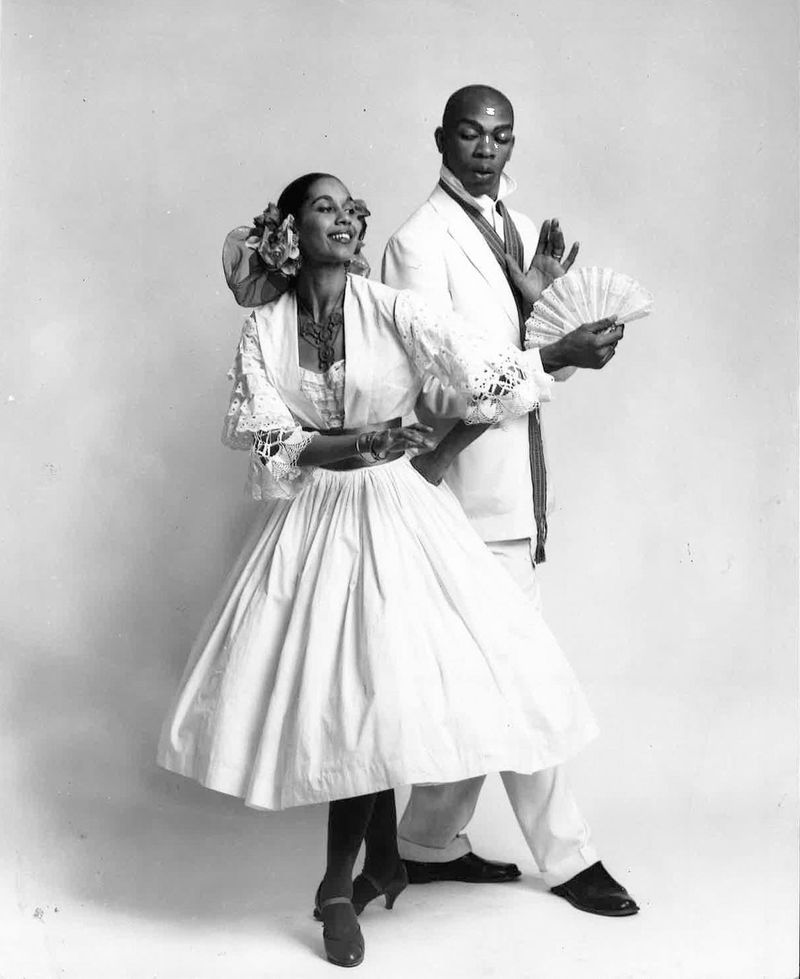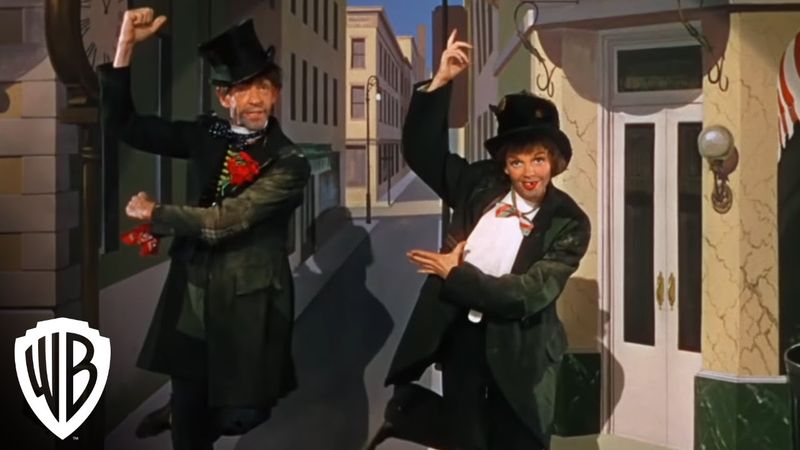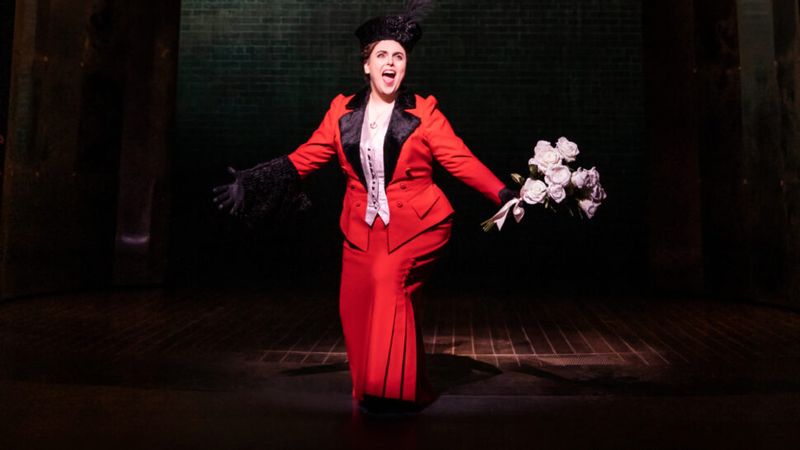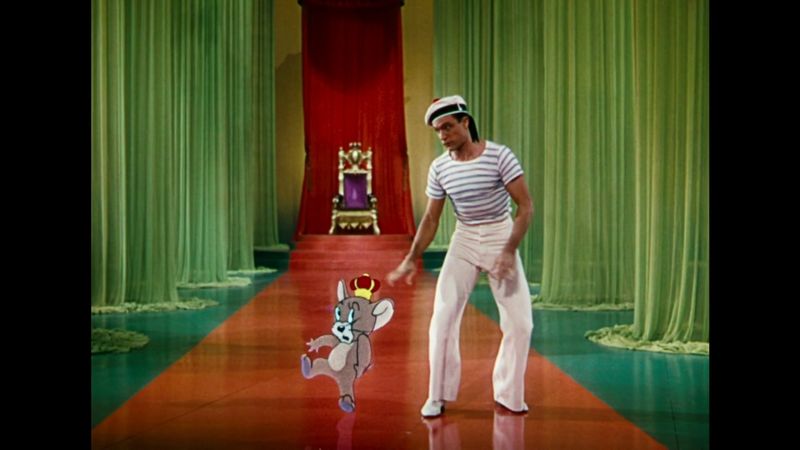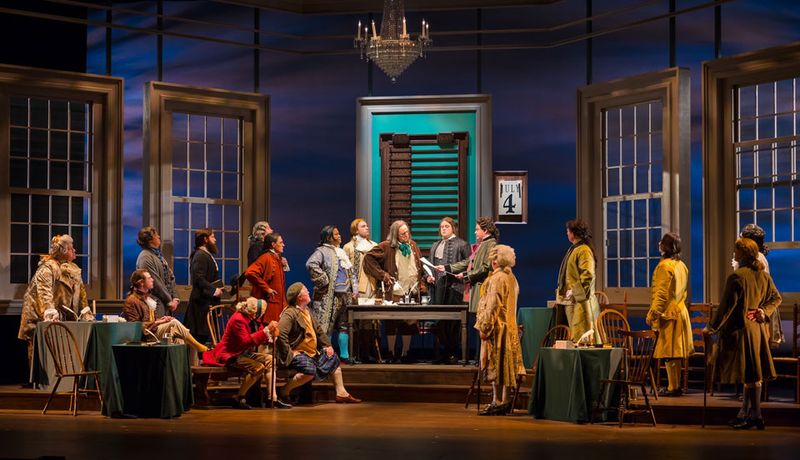Classic musicals are treasure troves of mesmerizing dance numbers, yet many remain hidden gems. These routines often get overshadowed by more popular acts, but they hold their own kind of magic.
Each selection brings a unique flair, whether through intricate choreography, iconic performances, or unexpected charm. Let’s explore 30 underrated dance numbers that deserve a standing ovation.
1. “Coffee Break” – How to Succeed in Business Without Really Trying (1967)
Who knew caffeine withdrawal could be so theatrical? In “Coffee Break,” office chaos is brought to life with jazzy ensemble choreography. The dance captures the frantic energy of a workplace without its daily fix, merging humor with precision. It’s a gem that doesn’t get the spotlight it deserves, overshadowed by more famous numbers. Yet, its delightful chaos and impeccable timing make it a standout in musical history. A true hidden treasure.
2. “Steam Heat” – The Pajama Game (1957)
Minimalist staging, bowler hats, and Bob Fosse’s signature micro-moves define “Steam Heat.” This number exudes a cool, restrained energy that contrasts with the high-octane routines typically celebrated. Despite its simplicity, the choreography is complex and meticulous, showcasing Fosse’s genius. It’s a number that simmers with style, deserving more recognition for its subtle mastery and unique flair. A piece that’s both timeless and ahead of its time.
3. “Cool” – West Side Story (1961)
Often overshadowed by “America,” “Cool” from West Side Story is a simmering dance-fight, filled with tension and technique. The choreography is raw and powerful, reflecting the turbulent emotions of its characters. It’s a testament to the film’s dynamic range, blending narrative and movement seamlessly. “Cool” stands as a testament to the power of dance to convey complex emotions. This number is not just a dance; it’s an explosive expression.
4. “Triplets” – The Band Wagon (1953)
Fred Astaire in baby clothes alongside Cyd Charisse and Jack Buchanan? “Triplets” is as weird and whimsical as it sounds. This number combines humor with intricate choreography, creating a surreal spectacle. Its playful absurdity is matched by the performers’ technical prowess, making it a delight for audiences. Despite its oddity, “Triplets” showcases the versatility and charm of classic musical numbers, deserving more love for its inventive spirit.
5. “Who’s Got the Pain?” – Damn Yankees (1958)
Bob Fosse and Gwen Verdon sharing the stage is an event in itself. “Who’s Got the Pain?” is a playful yet masterful display of their chemistry and talent. The dance is lively, filled with quirky movements and Fosse’s unmistakable style. Despite being a lesser-known number, it captures the essence of their collaboration. This piece is a joyful celebration of dance and theatricality, worthy of greater recognition for its charismatic charm.
6. “Barn Dance” – Seven Brides for Seven Brothers (1954)
The “Barn Dance” in Seven Brides for Seven Brothers is a sibling rivalry showdown of athleticism and swagger. This number puts even Olympic gymnastics to shame with its acrobatic feats and lively energy. The choreography is both challenging and exhilarating, capturing the rustic spirit of the film. Despite its brilliance, it often gets overshadowed by other sequences. A hidden gem that deserves applause for its bold and spirited execution.
7. “Be a Clown” – The Pirate (1948)
“Be a Clown” is pure kinetic joy, featuring a tap battle between Gene Kelly and the Nicholas Brothers. This number is an explosion of talent and energy, with each performer pushing the boundaries of dance. Their chemistry and skill make it a standout, yet it’s often overlooked. The sheer joy and brilliance of this performance make it a classic, deserving more appreciation for its dynamic and infectious spirit.
8. “Forget About the Boy” – Thoroughly Modern Millie (2002)
Tapping secretaries staging a full feminist rebellion? “Forget About the Boy” is criminally underrated. This number combines sharp, energetic choreography with a powerful message of independence. Set in the 1920s, it shines with its playful defiance and rhythmic precision. The dance is as much about the freedom it represents as it is about the intricate footwork. A modern classic that deserves retro credit for its bold and empowering essence.
9. “All I Do is Dream of You” – Singin’ in the Rain (1952)
Debbie Reynolds’ peppy party number “All I Do is Dream of You” often gets lost among the bigger routines of Singin’ in the Rain. This lively dance is filled with charm and energy, highlighting Reynolds’ talent and charisma. It’s a delightful sequence that combines light-heartedness with technical skill. Despite its overshadowed status, it remains a memorable moment in the film, worthy of recognition for its joyful exuberance.
10. “Abraham” – Holiday Inn (1942)
Tap masterclass by John W. Bubbles, “Abraham” is often overlooked due to more festive numbers in Holiday Inn. This dance is a testament to Bubbles’ incredible talent and rhythm, showcasing intricate tap sequences with flair. It’s a performance that captivates with its precision and artistry, yet it remains underrated. “Abraham” is a hidden gem that deserves more attention for its masterful execution and contribution to the art of tap dancing.
11. “Fascinatin’ Rhythm” – Lady Be Good (1941)
A wild Nicholas Brothers routine, “Fascinatin’ Rhythm” leaves jaws on the floor. This number is a whirlwind of energy and precision, showcasing the brothers’ unparalleled tap skills. Their performance is both captivating and awe-inspiring, yet it doesn’t always get the recognition it deserves. The intricate choreography and dynamic execution make it a standout in musical history. A true hidden treasure in the world of dance, worthy of more applause.
12. “From This Moment On” – Kiss Me Kate (1953)
Ann Miller, Tommy Rall, and others deliver a showstopping, sultry whirl in “From This Moment On.” This number is all about precision and flair, with intricate choreography that captivates audiences. Despite its brilliance, it often gets overshadowed by other numbers in Kiss Me Kate. The dance exudes elegance and sophistication, showcasing the performers’ exceptional talents. A hidden gem deserving of more love for its stylish execution and mesmerizing charm.
13. “Shaking the Blues Away” – Easter Parade (1948)
Ann Miller taps like her feet are on fire in “Shaking the Blues Away,” yet she makes it look effortless. This number is a dazzling display of skill and energy, capturing the essence of musical exuberance. Despite its brilliance, it often remains underrated compared to other sequences in Easter Parade. Miller’s performance is a testament to her talent and charisma, making it a hidden gem that deserves more appreciation for its dazzling charm.
14. “Jumpin’ Jive” – Stormy Weather (1943)
The Nicholas Brothers once again prove their brilliance with “Jumpin’ Jive,” ending with jaw-dropping splits down stairs. This number is an explosion of energy and talent, showcasing their incredible tap skills and charisma. The choreography is both daring and precise, leaving audiences in awe. Despite its impact, it often remains overshadowed by other performances. A hidden gem that deserves more recognition for its breathtaking execution and joyous spirit.
15. “Too Darn Hot” – Kiss Me Kate (1953)
“Too Darn Hot” exudes cool sensuality and simmering choreography that deserves the spotlight. This number is a masterclass in combining dance with atmosphere, creating a captivating and sultry performance. Despite its brilliance, it often gets overlooked in favor of more prominent numbers. The choreography is both intricate and alluring, making it a hidden gem in Kiss Me Kate. A piece that deserves more love for its sophisticated charm.
16. “Broadway Rhythm Ballet” – Broadway Melody of 1940
Eleanor Powell and Fred Astaire dance like twin flames in “Broadway Rhythm Ballet,” a cinematic treasure. This number showcases their incredible chemistry and technical prowess, creating a captivating performance. The choreography is both elegant and dynamic, blending artistry with precision. Despite its brilliance, it often remains underrated in musical history. A hidden gem that deserves more recognition for its mesmerizing execution and the sheer talent of its performers.
17. “Stiff Upper Lip” – A Damsel in Distress (1937)
Fred Astaire tap-dances through a funhouse in “Stiff Upper Lip,” creating a whimsical pre-war gem. This number combines humor with intricate choreography, showcasing Astaire’s talent and creativity. Despite its brilliance, it often gets overshadowed by more famous dances. The playful setting and Astaire’s charismatic performance make it a hidden treasure in musical history. A piece that deserves more applause for its inventive spirit and delightful execution.
18. “Begin the Beguine” – Broadway Melody of 1940
Some call it the greatest tap number ever filmed—”Begin the Beguine” is a mesmerizing display of tap mastery. Eleanor Powell’s performance is both intricate and captivating, showcasing her incredible talent. Despite its brilliance, it remains underrated in the world of dance. The choreography is both elegant and dynamic, leaving audiences in awe. A hidden gem that deserves more appreciation for its breathtaking execution and the artistry of its performer.
19. “Good Morning” – Singin’ in the Rain (1952)
Still overshadowed by the title number, “Good Morning” deserves solo standing ovations. This dance is a joyful celebration, filled with infectious energy and impeccable synchronization. The choreography captures the carefree spirit of the film, making it a memorable sequence. Despite its brilliance, it often remains in the shadow of “Singin’ in the Rain.” A hidden gem that deserves more recognition for its delightful charm and the talent of its performers.
20. “The Girl Hunt Ballet” – The Band Wagon (1953)
Cyd Charisse + noir + Fred Astaire = cinematic gold. “The Girl Hunt Ballet” is a blend of mystery, elegance, and dynamic choreography. This number captivates with its intricate storytelling and the charisma of its performers. Despite its brilliance, it often gets overshadowed by other sequences. The dance is a masterful fusion of style and narrative, deserving more love for its innovative approach and captivating execution.
21. “Slaughter on Tenth Avenue” – On Your Toes (1939)
A balletic gangster drama, “Slaughter on Tenth Avenue” is one of the boldest mashups in musical history. This number combines classical and contemporary dance, creating a unique and captivating performance. The choreography is both daring and innovative, yet it often remains underrated. The fusion of styles and the dramatic narrative make it a hidden gem deserving of more recognition for its bold execution and creative spirit.
22. “Down to the Sea” – The Pirate (1948)
Gene Kelly goes full pirate in “Down to the Sea,” combining dance duels with Broadway bravado. This number is filled with energy and flair, showcasing Kelly’s charisma and skill. Despite its brilliance, it often gets overshadowed by more famous sequences. The choreography is both daring and entertaining, making it a hidden gem in musical history. A piece that deserves more love for its spirited execution and the sheer talent of its performer.
23. “Ain’t It a Shame About Mame?” – Mame (1974)
High-style Broadway chic defines “Ain’t It a Shame About Mame?” This number is a lively celebration of style and energy, capturing the essence of 1970s theater. The choreography is both elegant and dynamic, yet it often remains underrated. The performers exude charisma and flair, making it a hidden gem deserving of more recognition. A piece that captures the spirit of its era, worthy of more applause for its stylish execution.
24. “Ballet of the Red Shoes” – The Red Shoes (1948)
A dreamlike, surreal dance sequence, “Ballet of the Red Shoes” influenced decades of stage choreography. This number captures the imagination with its haunting beauty and intricate choreography. Despite its impact, it often remains underrated in the world of dance. The fusion of dream and reality creates a captivating performance, leaving audiences in awe. A hidden gem that deserves more recognition for its artistic impact and the creativity of its execution.
25. “House of Flowers Ballet” – House of Flowers (1954)
Geoffrey Holder’s Caribbean-inspired movement in “House of Flowers Ballet” remains underappreciated. This number is a vibrant celebration of culture and rhythm, capturing the essence of the Caribbean. The choreography is both lively and captivating, yet it often remains overshadowed by other performances. The fusion of traditional and contemporary styles makes it a hidden gem deserving of more recognition. A piece that showcases the richness and diversity of dance.
26. “A Couple of Swells” – Easter Parade (1948)
Judy Garland and Fred Astaire doing hobo tap? “A Couple of Swells” is a whimsical masterclass in dance and performance. This number combines humor with technical skill, showcasing the performers’ charisma and creativity. Despite its charm, it often gets overshadowed by more famous sequences. The playful choreography and delightful execution make it a hidden gem deserving of more love. A piece that captures the joy and spirit of classic musicals.
27. “Don’t Rain on My Parade” (Reprise) – Funny Girl (1968)
Barbra’s power walk in “Don’t Rain on My Parade” becomes a choreographed declaration of war and empowerment. This number is a powerful blend of movement and emotion, capturing the essence of confidence. Despite its brilliance, it often remains overshadowed by other performances. The choreography is both strong and captivating, making it a hidden gem deserving of more recognition. A piece that stands out for its bold execution and empowering message.
28. “The Worry Song” – Anchors Aweigh (1945)
Gene Kelly dances with a cartoon mouse in “The Worry Song,” and somehow, it works beautifully. This number is a playful blend of live action and animation, showcasing Kelly’s charisma and innovation. The choreography is both inventive and entertaining, yet it often remains underrated. The seamless integration of dance and animation makes it a hidden gem deserving of more appreciation. A piece that captures the magic and creativity of musical film.
29. “Small House of Uncle Thomas” – The King and I (1956)
The ballet within “The King and I,” “Small House of Uncle Thomas,” is powerful, symbolic, and hauntingly memorable. This number captures the essence of storytelling through dance, blending tradition with innovation. Despite its impact, it often remains underrated. The choreography is both meaningful and captivating, making it a hidden gem deserving of more recognition. A piece that stands out for its artistic depth and cultural significance.
30. “Cool Considerate Men” – 1776 (1972)
Not your typical toe-tapper, “Cool Considerate Men” paints patriots as predators with its ominous choreography. This number is a bold statement, capturing the tension and power struggles of its characters. The choreography is both subtle and impactful, yet it often remains underrated. The fusion of dance and narrative makes it a hidden gem deserving of more recognition. A piece that stands out for its daring execution and the depth of its storytelling.
